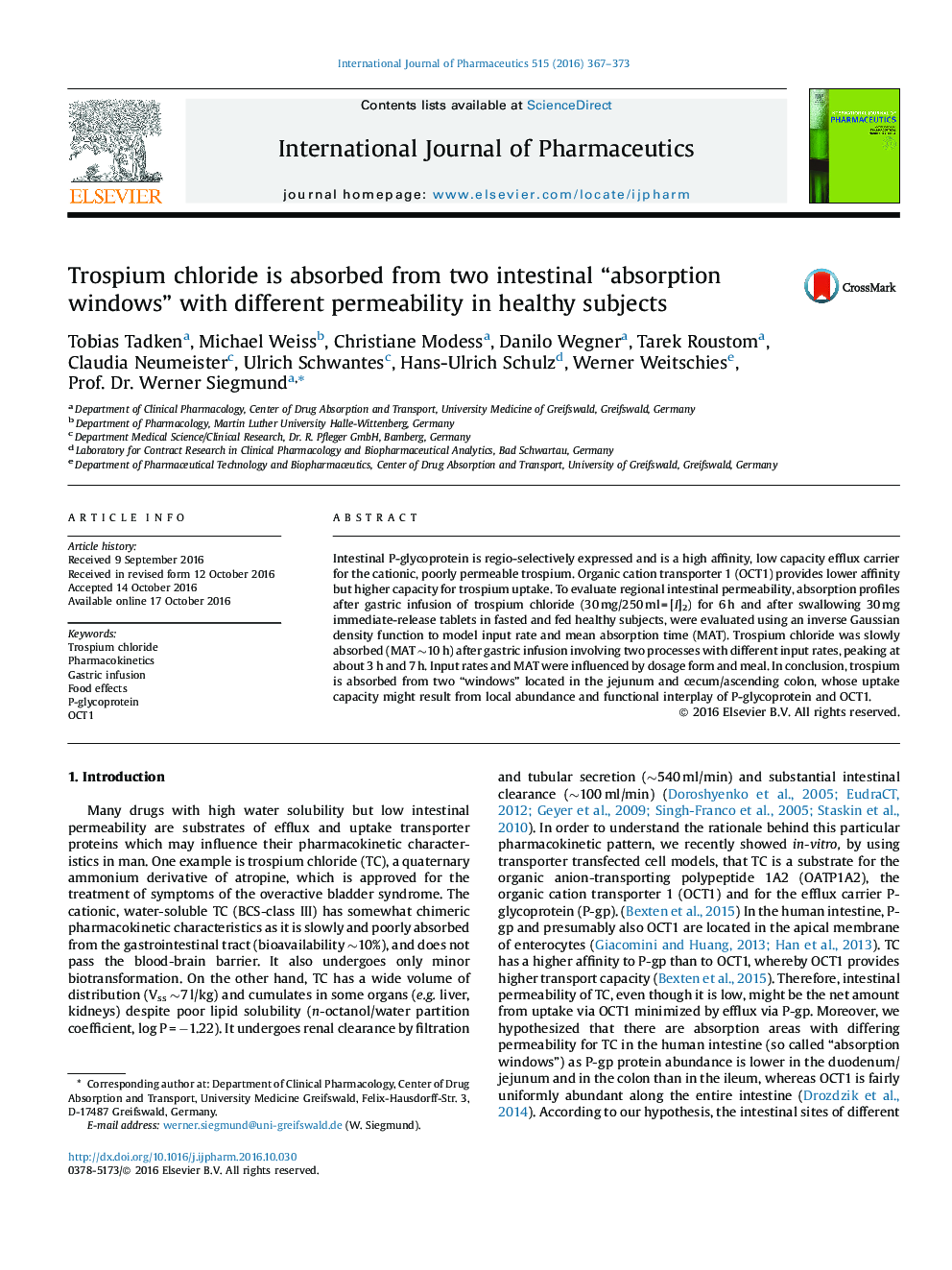| کد مقاله | کد نشریه | سال انتشار | مقاله انگلیسی | نسخه تمام متن |
|---|---|---|---|---|
| 5550861 | 1557302 | 2016 | 7 صفحه PDF | دانلود رایگان |

Intestinal P-glycoprotein is regio-selectively expressed and is a high affinity, low capacity efflux carrier for the cationic, poorly permeable trospium. Organic cation transporter 1 (OCT1) provides lower affinity but higher capacity for trospium uptake. To evaluate regional intestinal permeability, absorption profiles after gastric infusion of trospium chloride (30 mg/250 ml = [I]2) for 6 h and after swallowing 30 mg immediate-release tablets in fasted and fed healthy subjects, were evaluated using an inverse Gaussian density function to model input rate and mean absorption time (MAT). Trospium chloride was slowly absorbed (MAT â¼10 h) after gastric infusion involving two processes with different input rates, peaking at about 3 h and 7 h. Input rates and MAT were influenced by dosage form and meal. In conclusion, trospium is absorbed from two “windows” located in the jejunum and cecum/ascending colon, whose uptake capacity might result from local abundance and functional interplay of P-glycoprotein and OCT1.
103
Journal: International Journal of Pharmaceutics - Volume 515, Issues 1â2, 30 December 2016, Pages 367-373